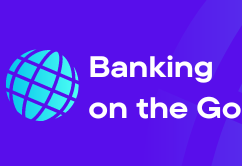The world of banking has undergone a massive transformation over the past few years, driven by rapid advancements in technology and changing consumer expectations. Online banking has become the norm, offering unprecedented convenience and accessibility. In this article, we will explore 15 top global online banking trends that are shaping the future of financial services.
Table of Contents
Toggle1. Mobile Banking Dominance
Mobile banking apps have become the primary channel for many consumers to manage their finances. With the proliferation of smartphones, banks are focusing heavily on mobile-first strategies. These apps offer a wide range of services, from checking account balances to making payments and transferring funds, all at the touch of a button. The convenience and accessibility of mobile banking continue to drive its popularity across the globe.
2. Enhanced Security Measures
As online banking becomes more prevalent, so does the need for robust security measures. Banks are investing heavily in advanced security technologies such as biometric authentication, including fingerprint and facial recognition, to protect against unauthorized access. Multi-factor authentication (MFA) is also becoming standard, adding an extra layer of security by requiring users to verify their identity through multiple means.
3. Artificial Intelligence and Machine Learning
Artificial intelligence (AI) and machine learning are revolutionizing online banking by enabling more personalized and efficient services. AI-powered chatbots and virtual assistants provide instant customer support, while machine learning algorithms analyze transaction patterns to detect and prevent fraud. These technologies also help banks offer personalized financial advice and recommendations based on individual spending habits.
4. Open Banking
Open banking is a trend that is gaining traction globally, driven by regulatory changes and technological advancements. It allows third-party developers to build applications and services around the financial institution, using open APIs. This leads to increased competition and innovation, providing consumers with more choices and better services. Open banking also promotes transparency and gives consumers more control over their financial data.
5. Blockchain Technology
Blockchain technology is transforming the way financial transactions are conducted by providing a decentralized and secure method of recording transactions. Its potential to reduce fraud, enhance security, and improve efficiency makes it an attractive option for banks. Many financial institutions are exploring the use of blockchain for cross-border payments, identity verification, and smart contracts.
6. Digital-Only Banks
The rise of digital-only banks, also known as neobanks, is one of the most significant trends in the financial industry. These banks operate entirely online without physical branches, offering lower fees and higher interest rates compared to traditional banks. Their user-friendly interfaces and innovative services appeal to tech-savvy consumers looking for a more modern banking experience.
7. Personalized Financial Services
Consumers today expect personalized experiences in every aspect of their lives, and banking is no exception. Banks are leveraging data analytics to understand their customers’ needs and preferences better. This enables them to offer tailored financial products and services, such as personalized loan offers, investment advice, and spending insights, enhancing customer satisfaction and loyalty.
8. Real-Time Payments
The demand for real-time payments is growing, driven by the need for instant transactions in today’s fast-paced world. Real-time payment systems allow consumers and businesses to send and receive money instantly, 24/7. This trend is particularly significant for peer-to-peer (P2P) payments, bill payments, and merchant transactions, providing greater convenience and efficiency.
9. Voice Banking
Voice banking is emerging as a convenient way for consumers to interact with their bank accounts using voice commands. With the increasing adoption of smart speakers and voice assistants like Amazon Alexa and Google Assistant, banks are integrating voice technology into their services. This allows users to check account balances, transfer money, and pay bills using simple voice commands, making banking more accessible and user-friendly.
10. Financial Inclusion
Online banking is playing a crucial role in promoting financial inclusion by providing access to banking services for underserved and unbanked populations. With the proliferation of mobile devices and internet connectivity, people in remote and rural areas can now open bank accounts, apply for loans, and make transactions without needing to visit a physical branch. This trend is helping to bridge the financial gap and promote economic growth in developing regions.
11. Sustainability and Green Banking
Sustainability is becoming a key focus for banks worldwide as they respond to increasing environmental concerns. Many financial institutions are adopting green banking practices, such as reducing paper usage, promoting digital transactions, and investing in renewable energy projects. Additionally, banks are offering green financial products, like eco-friendly loans and green bonds, to support environmentally sustainable initiatives.
12. Cryptocurrency Integration
The integration of cryptocurrencies into the banking system is a trend that continues to gain momentum. While traditional banks have been cautious about adopting cryptocurrencies, many are now exploring ways to incorporate them into their services. Some banks offer cryptocurrency trading platforms, while others are experimenting with blockchain-based solutions for cross-border payments and digital asset management.
13. RegTech Solutions
Regulatory technology (RegTech) is helping banks navigate the complex and ever-changing regulatory landscape. RegTech solutions leverage AI, machine learning, and big data to streamline compliance processes, reduce risks, and enhance regulatory reporting. By automating these tasks, banks can improve efficiency, reduce costs, and ensure adherence to regulatory requirements.
14. Customer-Centric Innovations
Customer-centric innovations are at the forefront of the online banking revolution. Banks are focusing on creating seamless and intuitive user experiences by investing in cutting-edge technologies and user interface design. From personalized dashboards to intuitive mobile apps, these innovations are designed to enhance customer satisfaction and engagement, making banking more convenient and enjoyable.
15. The Role of Big Data Analytics
Big data analytics is transforming the way banks operate by providing deep insights into customer behavior and market trends. By analyzing vast amounts of data, banks can identify patterns, predict future trends, and make informed decisions. This enables them to develop targeted marketing strategies, optimize operations, and offer more personalized services to their customers.
Also Read: Online Banking Scams: Latest News and How to Protect Yourself
The Bottom Line
The landscape of online banking is evolving rapidly, driven by technological advancements and changing consumer expectations. The 15 top global online banking trends outlined in this article highlight the transformative impact of these changes on the financial industry. From mobile banking dominance and enhanced security measures to AI integration and the rise of digital-only banks, these trends are shaping the future of banking, offering greater convenience, security, and personalized services to consumers worldwide. As technology continues to advance, the possibilities for innovation in online banking are limitless, promising an exciting future for both banks and their customers.
FAQs
What are the latest global online banking trends?
The latest global online banking trends include mobile banking dominance, enhanced security measures, artificial intelligence and machine learning integration, open banking, and blockchain technology. These trends are shaping the future of financial services by providing more convenience, security, and personalized experiences for users worldwide.
How is mobile banking influencing the banking industry?
Mobile banking has become the primary channel for many consumers to manage their finances. With the widespread use of smartphones, banks are prioritizing mobile-first strategies, offering a wide range of services such as checking account balances, making payments, and transferring funds, all through mobile apps. This trend enhances accessibility and convenience for users.
What security measures are banks implementing to protect online banking?
Banks are investing heavily in advanced security technologies to protect against unauthorized access and fraud. These measures include biometric authentication like fingerprint and facial recognition, multi-factor authentication (MFA), and real-time fraud detection systems. These technologies ensure that online banking remains secure and trustworthy.
How are artificial intelligence and machine learning used in online banking?
Artificial intelligence (AI) and machine learning are revolutionizing online banking by enabling personalized and efficient services. AI-powered chatbots and virtual assistants provide instant customer support, while machine learning algorithms analyze transaction patterns to detect and prevent fraud. These technologies also help banks offer personalized financial advice based on individual spending habits.
What is open banking and why is it important?
Open banking allows third-party developers to build applications and services around financial institutions using open APIs. This leads to increased competition and innovation, providing consumers with more choices and better services. Open banking promotes transparency and gives consumers more control over their financial data.
How is blockchain technology transforming online banking?
Blockchain technology provides a decentralized and secure method of recording financial transactions. Its potential to reduce fraud, enhance security, and improve efficiency makes it an attractive option for banks. Financial institutions are exploring blockchain for cross-border payments, identity verification, and smart contracts.
What are digital-only banks and why are they popular?
Digital-only banks, also known as neobanks, operate entirely online without physical branches. They offer lower fees and higher interest rates compared to traditional banks, appealing to tech-savvy consumers looking for a modern banking experience. Their user-friendly interfaces and innovative services are driving their popularity.
How are banks offering personalized financial services?
Banks are leveraging data analytics to understand their customers’ needs and preferences better. This enables them to offer tailored financial products and services, such as personalized loan offers, investment advice, and spending insights. Personalized services enhance customer satisfaction and loyalty.
What is the significance of real-time payments in online banking?
Real-time payments allow consumers and businesses to send and receive money instantly, 24/7. This trend is significant for peer-to-peer (P2P) payments, bill payments, and merchant transactions, providing greater convenience and efficiency. The demand for real-time payments is growing as consumers expect faster transaction processing.
How can I stay updated on global online banking trends?
To stay informed about global online banking trends, you can regularly check financial news websites and industry blogs. Following financial institutions and technology companies on social media can also provide updates on the latest trends and innovations in online banking. Additionally, subscribing to newsletters from reputable sources can help you stay current.















One thought on “15 Top Global Online Banking Trends”